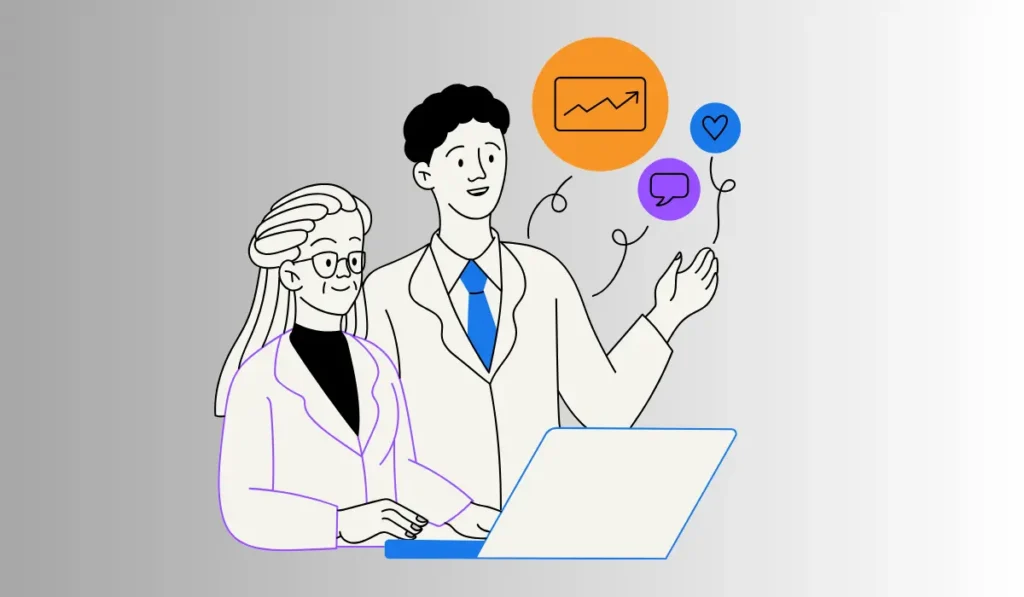The functions of teaching include transmitting knowledge and skills, imparting values, and facilitating learning.
To fulfill these functions effectively, teachers need to possess pedagogical knowledge, communication skills, classroom management techniques, and a commitment to ongoing professional development.
This article aims to explore the functions of teaching in more detail, highlighting the various responsibilities and challenges that teachers face in their daily practice.

The Fundamentals Of Teaching
Teaching is the process of imparting knowledge, skills, and values to students. It serves as the foundation of a student’s academic and personal development.
Here are some key aspects of teaching:
The Role Of A Teacher
Teachers are not just instructors but also mentors, motivators, and facilitators of learning. Their primary responsibility is to create a positive and supportive learning environment that enables each student to achieve their potential. These are the key roles of a teacher:
- Providing instruction, guidance, and support to students
- Assessing and evaluating student progress
- Identifying and addressing individual student needs
- Fostering positive relationships with students and parents
- Creating a safe and inclusive learning environment
Strategies For Effective Teaching
Effective teaching strategies help educators to engage students and promote meaningful learning. Here are some effective teaching strategies:
- Active learning – where students are engaged in the learning process, i.e. Through discussions, group activities, and projects
- Collaborative learning – students work together to solve problems and share knowledge and ideas
- Project-based learning – students learn by completing a project based on real-world problems
- Inquiry-based learning – students learn by exploring and investigating a specific topic
- Differentiated instruction – teachers vary teaching methods based on individual student’s abilities and learning preferences.
Incorporating Technology Into Teaching
Technology has revolutionized the field of education, creating new opportunities for teaching and learning. The integration of technology in teaching has the potential to enhance student engagement and improve learning outcomes.
Here are some ways to integrate technology into teaching:
- Use of multimedia resources such as videos, images
- Online quizzes and assessment tools
- Learning management systems (LMS) to manage course materials and assignments
- Online discussion forums for collaborative learning
- Virtual simulations to create real-world experiences

The Importance Of Understanding Student Needs
As a teacher, it is essential to understand the unique needs of each of your students to ensure that they achieve their full potential.
Identifying these needs can help with creating a conducive learning environment, adapting teaching methods to suit each learner, and supporting students with learning difficulties.
Identifying The Needs Of Different Learners
To identify the needs of different learners, it is crucial to assess their strengths, weaknesses, learning preferences, and interests. Some common ways to identify student needs include:
- Conducting one-on-one meetings with students
- Administering diagnostic assessments
- Observing students in the classroom
- Encouraging student feedback and questions
Creating A Conducive Learning Environment
Creating a conducive learning environment involves designing a classroom that caters to the diverse needs of all students. Some tips for establishing such an environment include:
- Ensuring that the classroom is well-lit and comfortably arranged
- Incorporating various resources, including audio-visual aids and learning materials
- Building a positive rapport with students, thus creating a supportive and respectful climate
Ways To Support Students With Learning Difficulties
Students with learning difficulties require additional support to achieve their academic goals. As a teacher, it is crucial to put in place measures that promote inclusivity and offer support. Some ways to support students with learning difficulties are:
- Providing one-to-one support and individual attention
- Offering alternative formats for assignments and assessments
- Using assistive technology when needed
- Ensuring that the classroom is free from distractions

Unlocking The Secret Functions Of Teaching
Teaching is not only about transferring knowledge from teachers to students. Teaching has multiple functions that go beyond the traditional teacher-student relationship.
The secret functions of teaching by understanding the psychology of teaching and learning, the power of positive reinforcement, the fostering of critical thinking and problem-solving skills, and the impact of soft skills on student success.
The Psychology Of Teaching And Learning
Understanding the psychology of teaching and learning is essential for educators to develop effective teaching strategies. Here are some key points to consider:
- Students’ attitudes, emotions, and beliefs influence their learning outcomes.
- The quality of the teacher-student relationship and the learning environment affects learning outcomes.
- Learning is an active and social process, and students should be actively involved in their learning.
The Power Of Positive Reinforcement
Positive reinforcement is a powerful tool that educators utilize to promote desired behaviors and outcomes. Here are some key points to consider:
- Positive reinforcement increases the likelihood of desired behaviors and outcomes.
- Tangible and intangible rewards can be effective forms of positive reinforcement.
- Positive reinforcement increases intrinsic motivation and self-esteem.
Fostering Critical Thinking And Problem-Solving Skills
Critical thinking and problem-solving are essential skills that students need to develop to be successful in their personal and professional lives. Here are some key points to consider:
- Encouraging students to question assumptions and analyze evidence promotes critical thinking.
- Problem-solving requires identifying the problem, developing potential solutions, and evaluating their effectiveness.
- Teaching critical thinking and problem-solving skills prepares students to meet complex challenges in the real world.
The Impact Of Soft Skills On Student Success
Soft skills are non-technical skills that are essential for success in the workplace and in life. Here are some key points to consider:
- Soft skills, such as communication, teamwork, and leadership, are highly valued by employers.
- Soft skills are important for personal and professional success, including academic achievement and interpersonal relationships.
- Educators can foster the development of soft skills by creating opportunities for students to practice and apply them.
Creating Engaging Lesson Plans
The primary goal of teaching is to impart knowledge to students, which can be challenging, given that students may not always be keen to learn. However, by creating engaging lesson plans, teachers can make learning a fun and interactive experience.
Here are some key strategies for creating engaging lesson plans:
Incorporating Creative And Innovative Teaching Methods
Incorporating creative and innovative teaching methods in lesson plans is an excellent way of keeping students engaged.
Effective teaching involves the use of various learning tools, including videos, games, and interactive whiteboards. Incorporating digital media helps students to learn at their own pace, making it easier to understand and retain information.
Making Lessons Fun And Interactive
The use of fun and interactive activities helps to create an engaging learning experience for students. Lessons can be made more energetic and interactive by incorporating various activities such as:
- Quizzes
- Debates
- Field trips
- Hands-on activities
- Outdoor activities
Encouraging Student Participation And Engagement
Encouraging student participation and engagement is another vital aspect of creating engaging lesson plans. When students are actively involved in learning activities, they are more likely to comprehend and retain information with ease.
Here are some effective strategies for encouraging student participation and engagement:
- Provide a safe and supportive learning environment
- Ask open-ended questions
- Provide opportunities for students to ask questions and seek clarification
- Give feedback on students’ ideas and contributions
Assessment Strategies To Measure Student Progress
Assessment strategies are vital in measuring student progress and understanding of concepts. A combination of various assessment techniques helps to evaluate student performance effectively. Teachers can use different assessment techniques such as:
- Tests and quizzes
- Essays and reports
- Portfolios
- Presentations
Creating engaging lesson plans is essential in providing quality education to students.
Frequently Asked Questions
What Are The Main Functions Of Teaching?
The primary function of teaching is to impart knowledge and valuable life skills to students. Effective teaching promotes intellectual growth, intellectual maturation, and personal development.
Why Is Teaching Important In Society?
Teaching plays a vital role in society as it helps shape the personality, mindset, and character of individuals. It provides knowledge, enhances skills, and equips individuals to contribute positively to society.
What Qualities Should A Good Teacher Possess?
The qualities of a good teacher include being personable, enthusiastic, knowledgeable, organized, and patient. A good teacher should also possess excellent communication and interpersonal skills, be adaptable, and be willing to learn.
Conclusion
As we have seen, teaching is a multifaceted profession that requires a range of skills and expertise. It involves not only imparting knowledge but also nurturing the students’ emotional and psychological well-being, shaping their character, and preparing them for future careers and social roles. A teacher is a role model, a mentor, and a guide who helps students navigate the complexities of the world with confidence and resilience. Effective teaching requires a combination of pedagogical, interpersonal, and organizational skills along with a deep passion for learning and teaching.


